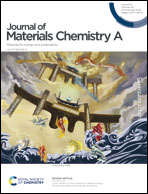COF-confined catalysts: from nanoparticles and nanoclusters to single atoms
Abstract
In heterogeneous catalytic reactions, nano-scale particles (nanoparticles, nanoclusters, and single atoms) display excellent performance due to their different electronic structures, particle sizes, and geometric shapes. However, nano-scale particles are easy to aggregate and inactivate, so confining nano-scale particles in crystalline porous materials is a best way to solve the above problems. Covalent–organic frameworks with high crystallinity, high porosity, and tunable structures will be a potential alternative, and have attracted substantial attention. More importantly, the interaction between nano-scale particles and supports (confinement effect) could be controlled through different synthetic methods. The confinement effect has a great influence on the performance of the catalysts, for example, the size effect for activity promotion, encapsulation effect for stability enhancement, and molecular-sieving effect for selectivity improvement. Therefore, the confinement effect of COF-confined catalysts provides functional sites for catalytic reactions. There has been a major breakthrough in solving the problems of environmental pollution and energy shortage. The efficiency of heterogeneous catalytic reactions such as hydrogen production, carbon dioxide reduction reaction, 4-nitrophenol reduction, hydrogenation reaction, and organic pollutant degradation has been improved by using COF-confined catalysts. Herein, the synthetic methods of nano-scale particles confined in COFs are summarized, and the interaction between nano-scale particles and COFs is discussed to understand their various confinement effects. Then, the interaction between nano-scale particles and the reactant was understood through heterogeneous catalytic reactions. Finally, perspectives on the future developments in COF-confined catalysts in various fields are highlighted.

- This article is part of the themed collection: Journal of Materials Chemistry A Recent Review Articles


 Please wait while we load your content...
Please wait while we load your content...